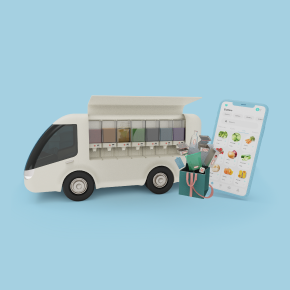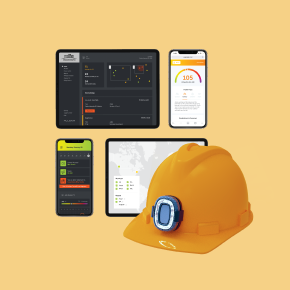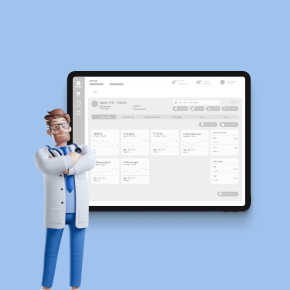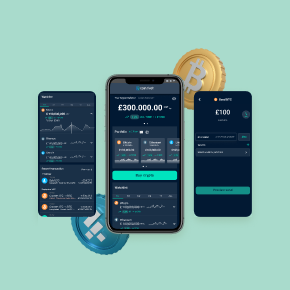Pulsair
Air management system for construction workers, the company, the community, and governments. Using air quality data collected by the individual to benefit the wider community.
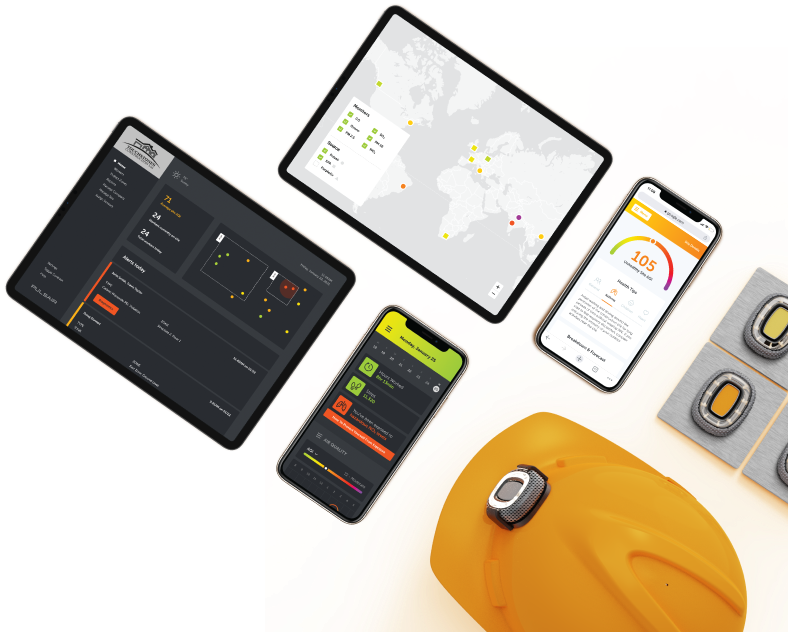
1. Problem
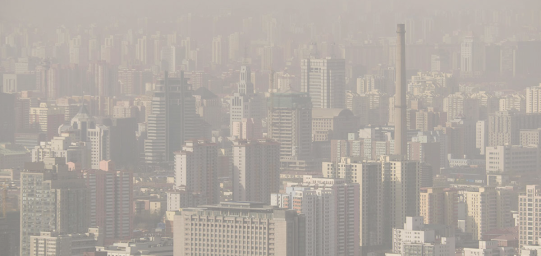
Air pollution: The Invisible Killer
- Air pollution’s impact on health is often invisible at first. However, prolonged exposure to air pollutants like PM2.5 and NO2 increases the risk of getting fatal heart disease and lung cancer. Very often when people notice the symptoms, it’s already too late.
- Opportunity to make the invisible visible: How might we visualise the invisible health impact of air pollution
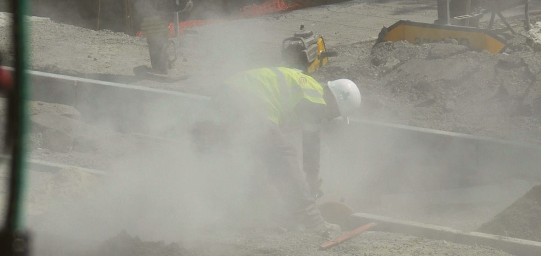
Vulnerable communities are more at risk
- Exposure is linked to the social-economical level: families with lower income are forced to live or work in highly air-polluted areas.
- These vulnerable communities prioritise putting food on the table over preventing the invisible health impact of air pollution.
- What they need is not a high-end, feature-rich new portable air purifier but an accessible way to protect themselves
- Opportunity help a target group that has high exposure and low awareness which is why we chose to serve construction worker who works outdoor
2. Background & Role
A student group project for IxDA SDC
- The brief we got was: How can we use individual data for the public good
- Team of 3 in the East and West coast of the USA, UK across 3 time zones
- The duration of the project was 4 weeks
- We were lucky to have 2 experienced designers as mentors
My role
- Researchers & Interview facilitator
- 3D Product and interaction designer
- Storyteller
3. How I got to the solution
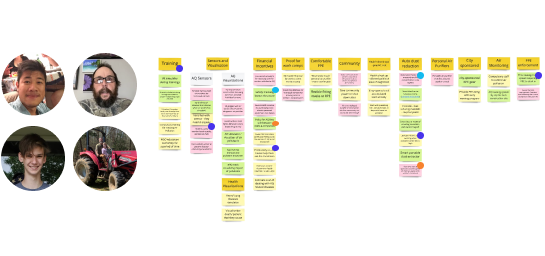
Discovering there’s low awareness among individual workers through user interviews
- Construction workers know that toxic fumes are bad, but they don't know just how bad they can be: fatal heart disease, lung disease, and cancer later in life
- They are wary of safety on-site because they can see the immediate impact of an accident. However, when it comes to health impacts, they often opt for comfort than wearing a mask
- Opportunity to increase awareness through impactful training
Realising there’re low incentives for companies to protect the workers through desk research
- Because the health impacts of air pollution appear after decades, construction workers struggle to provide evidence that relates their current symptoms to their past jobs
- This means companies can get away with not protecting their workers from air pollution without paying the cost of worker’s compensation
- Opportunity to incentivise clean air: How might we encourage the companies to protect their workers and prevent pollution
Spotting the gap in policy at the government level
- EU policies penalise companies for exceeding the levels - which creates more incentive for companies to start taking care of their workers than the US protection law
- Although there are growing trends in mandatory disclosure of site Air Quality Index (AQI), the policies still didn’t address improvements that an individual can make
- Opportunity to connect data to individual’s action
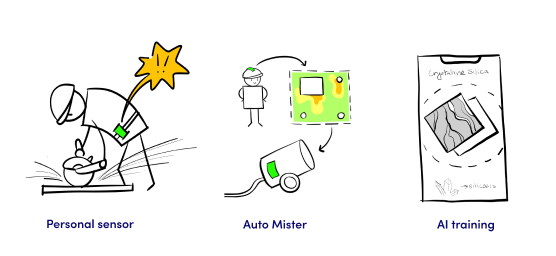
Getting feedback on concepts from workers, business owners, and experts
Through ideation, we came up with 3 concepts: Automated mister, VR training, and Personal sensor
- For the auto mister, experts feedback that its application is limited as the cancer-causing particles like PM2.5 are too small to be targeted by it
- The current training does need an upgrade, currently taking mc questions with pen and paper - but how might we make the training related to their day-to-day work and make them memorable
4. How does it work
5. How it solves the problem
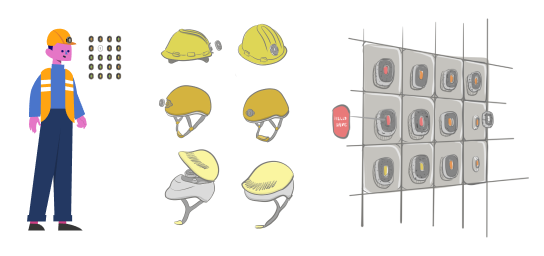
Incorporate air quality tracker into the routine to encourage behaviour change
- After carrying the air monitor sensor throughout work, the workers will receive an overview of the day including steps, pollution, and hours worked
- They will also receive customised pollution training specific to their work environment
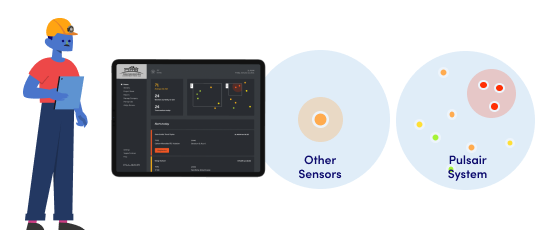
The company can now locate the root causes
- With access to individual data shared by the workers, the company through the dashboard can now see the hyper-local air quality map and can identify the source of pollution
- This allows them to locate spills, fix leaks, and mend broken machines
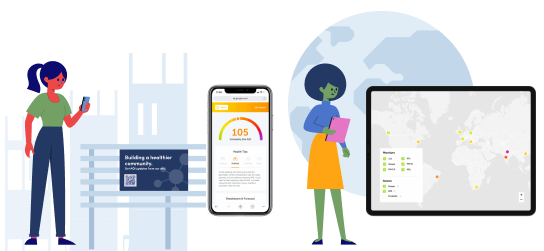
Transparency for the community data stream for the government
- Community members can scan the QR code outside of the site to check the AQI and receive lifestyle recommendations. They can plan their route around heavily impacted areas to prevent health impacts
- Governments can create better policies around air pollution. Pulsair helps them monitor and measure the effectiveness of their policies. Having access to the air quality data of other regions and countries, the government can also learn from other initiatives
6. Challenge
Data privacy
We were challenged to think about how can we involve a wider community while protecting the worker’s data privacy. Through brainstorming, we decided to limit access to private data to different levels. Workers have full ownership of their data and can give consent to the company to access it. The community and the government will receive an average of the AQI and take action respectively
Short time frame
Only having a month from receiving the brief to delivering the solution was a challenge. We learnt to find resources to help us save time and focus our effort on crafting an impactful solution, e.g. using low-fidelity sketches to communicate concepts and using illustrations in the short concept video
7. Impact
Company
Product providers
Government
Planet
8. Learning
Remote collaboration
As a team of 3 working across 3 time zones, project management is a challenge. Learning to scope the project and assign tasks based on each other’s strengths and constraints made us an effective team.
Add human aspect to storytelling
By adding characters to your narrative you can take the audience on a journey. It helps them to better empathise with the pain points you are addressing and understand your solution in context.
Defining target audience
We've learnt to design for the extreme users and identify where’s the gap in the market. By mapping out potential user across 2 axes: awareness and exposure, we chose to focus on construction workers, who has lower awareness and high exposure.
Reach out to experts
I understood designer’s role is not to be the expert but to reach out to different experts throughout the process: problem identification, ideation, feedback sessions, and understanding policies and technical limitations. You will be surprised how willing people are to help.
See it in action
Bubble
Remote healthcare monitoring platform for Healthcare Professional
